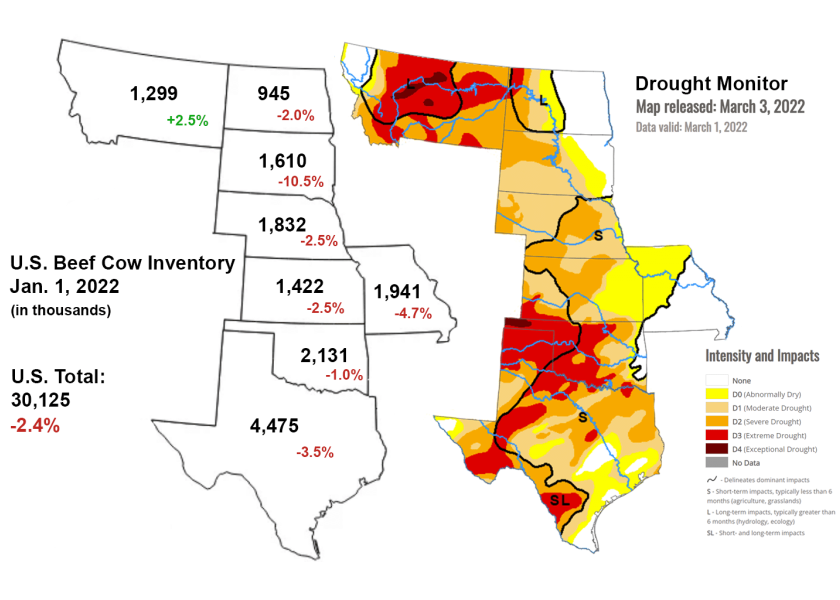Drought’s Impact On Cow Inventories in the Central Plains

According to Thursday's report from the US Drought Monitor, more than 61% of the contiguous US is in some classification of drought. When compared to a map of beef cow inventories, the drought is affecting roughly 80% of the nation’s herd.
The current drought monitor shows the largest portion of the country in a state of drought since 2012, the year when the continental US saw an all-time record of 65% during September. That drought, from 2011 to 2013, caused America’s beef cow herd to decline to its lowest inventory since 1952.
America’s ranchers were barely recovering from that historic drought and here we are – facing a similar situation. And it’s only mid-March.
The maps above show the severity of the drought in eight states in the Central Plains and where they began the year in terms of beef cow numbers. Seven of those eight states culled cows last year. The U.S. beef cow herd declined by 719,000 head last year and these eight states represented a net loss of 484,000 cows, or 67% of the U.S. total.
The eight states highlighted here are critical to America’s beef industry – that’s where 52% of the nation’s herd of 30.125 million head reside. Specifically, 15.655 million beef cows are in the eight states singled out here.
Iowa could have been added to this list, making it nine states with 55% of the cow herd, but Iowa was a drought outlier last year, increasing its cow herd by 8%.
Whether the analysis is eight states or nine, the result is the same. Drought already threatens the bulk of America’s beef cows in the heart of ranch country.
Seven states have more than one million beef cows, all of them within this central region. The other two states in this nine-state region, Iowa and North Dakota, have at least 945,000 beef cows.
The thirteen states that lay west of these central eight have 5.189 million beef cows, 17.2% of the nation’s herd. (Alaska and Hawaii are included in these 13.) They, too, are in severe drought. California just experienced the driest January and February since the Gold Rush days of 1849.
That leaves 29 states on the map that are east of our central eight. Of those, only nine states are without drought in the latest Drought Monitor, although only one or two of those 29 states are completely emersed in drought at this time. Those 29 states are home to 9.278 million beef cows, or roughly 30.8% of the nation’s herd.







